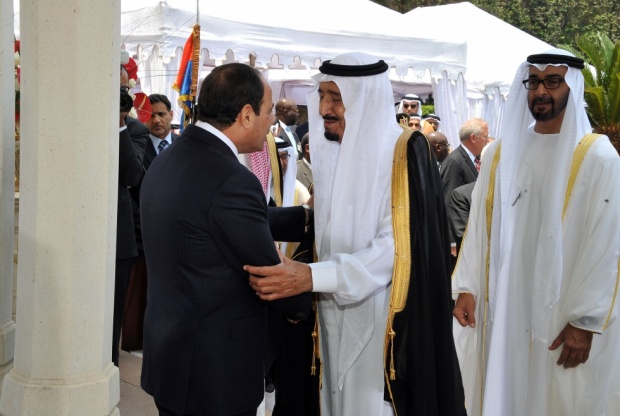
(AFP Photo)
The positive outlook Egypt was accredited with will lead investors to view the country’s economy as promising and can definitely increase the chances of receiving investments, former minister of supply Gouda Abdel-Khalek told Daily News Egypt.
International rating agency Standard and Poor’s have affirmed Egypt’s long and short-term foreign and local currency sovereign credit ratings at ‘B-/B’, the agency announced 15 May in an official statement, putting the country’s outlook at “positive” instead of “stable”.
The ratings are supported by positive growth expectations and financial backing by the Gulf, aiding the country’s gradual economic recovery, the agency noted.
Furthermore “policymakers’ commitments since 2014 to embark on economic reforms that include subsidy and income tax reforms, a new law on investment, and the announced value-added tax (VAT) system on goods and services” are all steps that supported the agency’s review and ratings.
Abdel-Khalek said that Standard and Poor’s is one of the most prominent rating agencies, with its reports and outlooks being followed by international investors.
“The positive outlook can lead the country to enter the international arena with better regulations offered by different entities, such as allowing easier access to loans for both the government and companies, as well as providing flexible rules when it comes to trading policies,” Abdel-Khalek noted.
Egypt can be given grace periods before paying for imports of certain goods, thus decreasing the burden of payment, Abdel-Khalek elaborated.
Nonetheless, Standard and Poor’s revealed that its ratings on Egypt remain restrained by “wide fiscal deficits, high domestic debt, low income levels, and institutional and social fragility”.
Abdel-Khalek said: “Ratings are never everlasting, they continuously get revised and they can change to either positive or negative outlooks, depending on a number of political and economical factors.”
The agency however expects that growth rates will reach an average of 4.3% per year in 2015-2018, in comparison to “2.1% in the previous four years”.
All indicators show that the growth rate is expected to increase in the upcoming period, Abdel-Khalek further noted.
Egypt’s fiscal deficit will stabilise at a still-high 10% on average between 2015 and 2018, even with the fiscal reforms that the Egyptian government had introduced, such as cutting energy subsidies and raising taxes on higher income earners, the agency projected.
“We assess Egypt’s monetary policy flexibility as low,” the statement said. “Notwithstanding the CBE’s interventions, the Egyptian pound has depreciated by about 27% against the US dollar since January 2012, including a slide of about 7% since the beginning of the year.”
The agency noted in its statement that it could raise Egypt’s long-term ratings over the next 12 months, should economic revival exceed their current anticipations.
Nonetheless, “we could also revise the outlook to stable if we think recently improved political stability is threatened by political strife that could hamper the economic recovery,” the statement also reflected.
Egypt’s international foreign reserves posted their largest rise since December 2011, where they jumped to $20.5bn at the end of April 2015, due to the arrival of $6bn at the CBE in Gulf deposits from Saudi Arabia, Kuwait and the UAE.
Since December 2011, foreign reserves continued to fluctuate, but did not surpass the $20bn figure.
Moody’s and Fitch, other rating agencies, recently revealed that they expect average economic growth to reach 5% until 2019.



